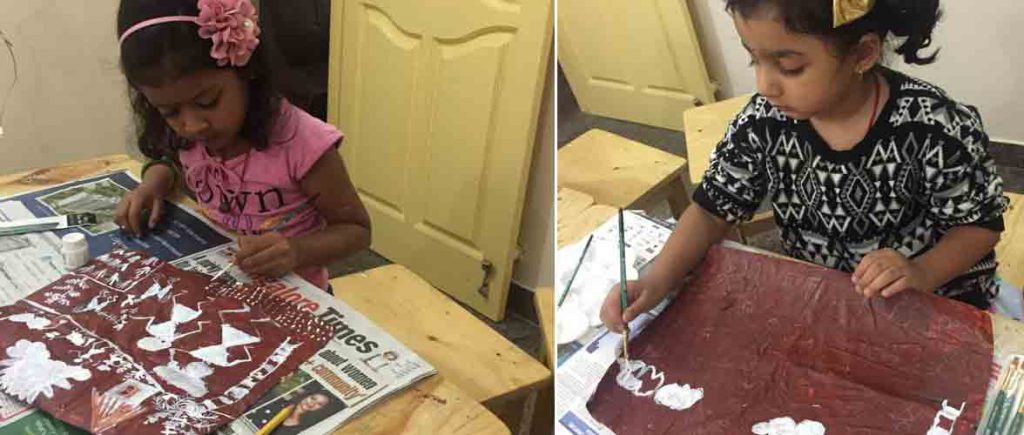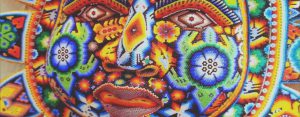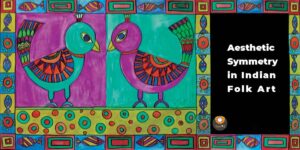Warli art is a easiest art for kids to start with. Kids can easily relate to simple geometrical figures that warli art consist of. One of the great way to teach kids about Lines, Shapes, dots and circles. Its very easy to get attention of kids with vibrant colors and simple warli art. Our class objective to teach about origin of folk art warli, composition with lines or stick figures. Great activity for kids to create and draw story from here imagination.
Warli folk Art History
Warli painting originated in Maharashtra, where it is still in practice today. The warli tribe is one of the largest tribe in india which is located outside of Mumbai. In 1970, these paintings were recognised, even though this style of Art is date back as early as 10 century A.D. The idea of warli centred around the concept of Mother Nature and parts of nature.
Farming was the main source of life for this tribe. Since the nature precedes the resources for life they respect nature and wildlife. clay hut used as canvas by artist’s, same as how ancient people used the cave walls as their canvases.
This art uses set of basic geometric shapes like circle, triangle, lines and square. These shapes were different elements of nature. Circles represented sun and moon while triangle represented mountains and pointed trees. In ritual paintings festivals and dances were common. People and animals represented by two inverse triangles joined at there tip. Warli also represent day to day life and activities of village people.
One of the aspects that this art depicts is the ‘Tarpa dance. Tarpa is a trumpet-like instruments played by village mens in turns. Men and women entwine there and hands and move in circle around the Tarpa player. Formation of circle by men and women in village said resemblance of circle of life.
This art uses set of basic geometric shapes like circle, triangle, lines and square. These shapes were different elements of nature. Circles represented sun and moon while triangle represented mountains and pointed trees. In ritual paintings festivals and dances were common. People and animals represented by two inverse triangles joined at there tip. Warli also represent day to day life and activities of village people.
One of the aspects that this art depicts is the ‘Tarpa dance. Tarpa is a trumpet-like instruments played by village mens in turns. Men and women entwine there and hands and move in circle around the Tarpa player. Formation of circle by men and women in village said resemblance of circle of life.
Objective of Class activity
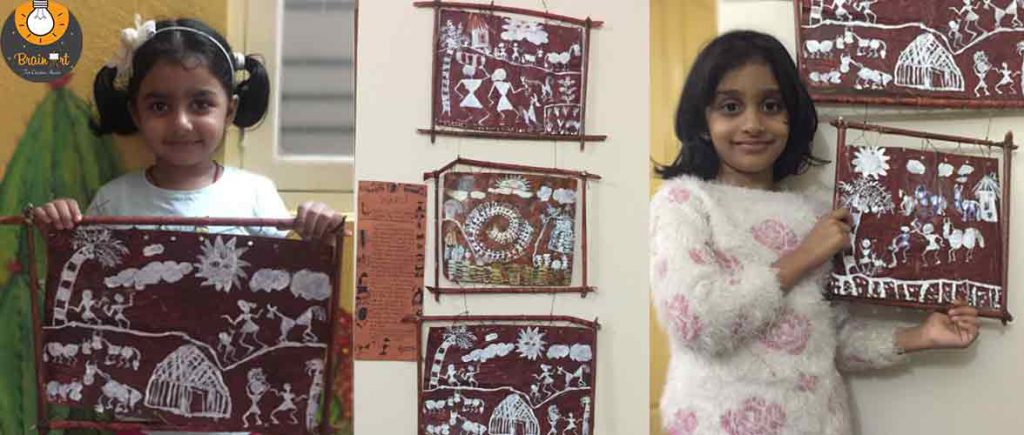
Introducing folk art of Indian tribal Art Warli. This art class children will investigate the motivations, uses and traditions of this art and create their own self-inspired drawings in form of story. Class objectives:
- Introducing line drawing – composition with line drawing / stick figures
- Paper recycling – using old newspapers to create the backdrop/canvas
- Weaving
- Create art supported their own narrative by group action with a number of their most valued recollections or life experiences.
- Using acrylic paints or oil pastels on paper (recycle news paper using paper mache technique) and using technique like mixing & Smudging to create artwork
- Learn how to use pattern and repetition to assist recreate a true sensory experience in a very two-dimensional work space by observing samples of Warli paintings and the way they successfully used those techniques in their work.
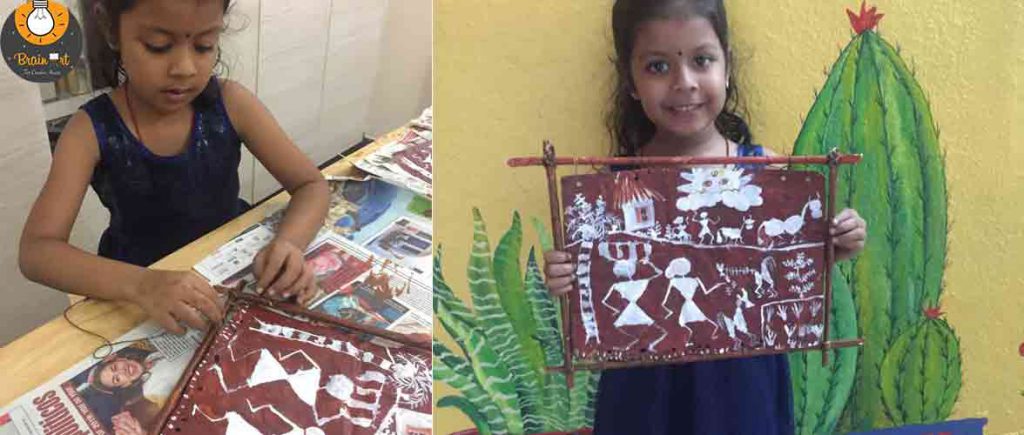

Looking for Online / Offline Art classes for Kids ?
Get in touch with us, We are located in HSR Layout, Sector 2, Bangalore
